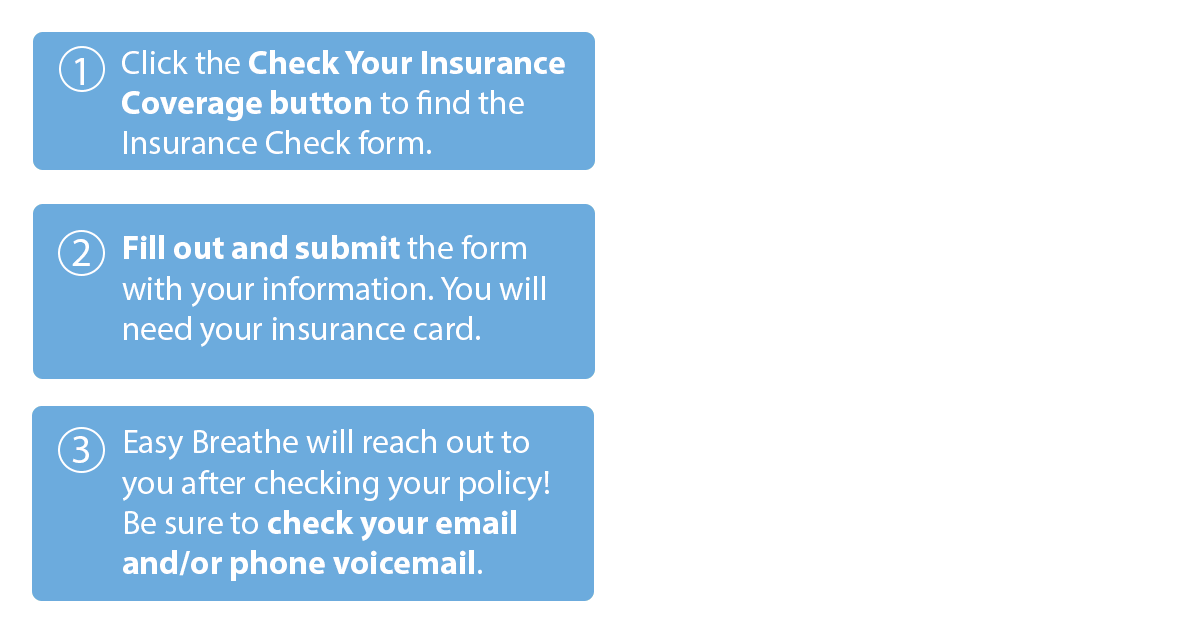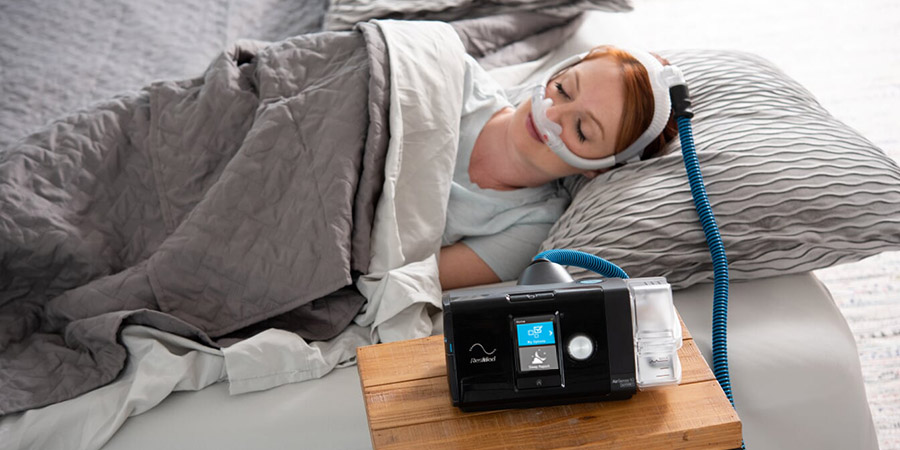New to CPAP? Here’s Everything You Need to Know
Whether you’re just hearing about CPAP for the first time, you’ve already been diagnosed, or you already have a machine, the world of CPAP therapy can be confusing to understand. There are a lot of different terms, products, and steps that you must take to navigate the space. Unfortunately, there aren’t too many people or resources to help guide you through it.
Because of this, we decided to write the very first, all-in-one CPAP beginner guide to get you up-to-speed about all things CPAP as quickly as possible.
What is CPAP?
If you’re just hearing about CPAP for the first time or you’re just not quite sure what it is, we’re here to help! Our CPAP beginner guide was designed to clarify the process and answer your questions.
The word “CPAP” stands for Continuous Positive Airway Pressure, meaning that the device creates air pressure and pushes it into your lungs. In doing so, your CPAP will help keep your airways open while you’re sleeping, ensuring that you’re getting the appropriate amount of oxygen and the rest you deserve.
There are a lot CPAP devices on the market, so if you want to learn more about them, check out our article on the Best CPAP Machines of 2021!
What Do CPAPs Treat?
Great question! CPAPs mainly treat Obstructive Sleep Apnea (OSA). People with OSA will have their airways intermittently blocked throughout night, causing repeated stops and starts in their breathing.
The blocking of the airways also causes less oxygen to flow to the brain and can cause drowsiness, forgetfulness, and can have a serious impact on day-to-day behavior.
Some signs that you might have Obstructive Sleep Apnea include:
- Snoring
- Forgetfulness
- Drowsiness
- Worsening Depression
For some more severe cases of obstructive sleep apnea, individuals may also need to use a device called a BiPAP which provides two different pressures (one during inhalation and a different pressure during exhalation). To learn more about the difference between these two devices, check out our CPAP vs. BiPAP article.
How Do I Get a CPAP?
Even though it can seem confusing, getting a CPAP is actually pretty straightforward! First, you’ll need to do a sleep study so a healthcare professional can determine whether you have Obstructive Sleep Apnea and the best course of treatment if you do.
To get one of these sleep studies, there are two options:
- In-Lab Study: For this option, you’ll go to a lab, and you’ll sleep there overnight to have your sleep monitored. This option is more expensive, but it will be able to provide you with more comprehensive data and results.
- Home Sleep Study: If you choose this option, you’ll take the sleep study at your own home and wear a device which gathers data while you sleep. This option is more affordable and convenient, but it provides less comprehensive data (although it will still be sufficient for a diagnosis!)
Here in our CPAP Beginner Guide we’ve only outlined the sleep test basics, so to read more about sleep studies, check out our Home Sleep Study article.


What Happens After I Get a Sleep Study?
After you’ve completed your sleep study, your results will be analyzed to see if you have Obstructive Sleep Apnea. When determining this, the doctor examining your sleep data will look at how many “apneas” (defined as the number of times your airflow is impeded for more than 10 seconds) you had per hour.
The following are the ranges for apneas per hour:
- 0-5: Normal
- 5-15: Mild sleep apnea
- 15-30: Moderate sleep apnea
- >30: Severe sleep apnea
If it’s determined that you have sleep apnea, then you will be given a prescription for a CPAP machine. At this point, you have finally entered the world of CPAP!
Do I Need to Have a Prescription to get a CPAP?
Great question! Since CPAPs are classified as Class II medical devices, it’s required by law that we have a prescription on file before selling someone a CPAP.
It’s worth noting that once you’ve had an initial sleep study, you won’t ever need another one again. With our Easy Breathe CPAP Prescription Program, we can renew your CPAP Prescription (Rx) for you without another trip to the doctors.
The other good news is that not all CPAP supplies require a prescription! CPAP mask parts, tubing, CPAP cleaners, filters, etc. can generally be purchased without a CPAP prescription.
To learn more about how you can get an initial or renewed prescription and what supplies require a Rx, check out our CPAP Prescription article!
I Have My CPAP Prescription… Now What?
Now that you have your CPAP prescription, it’s time to get CPAP supplies. To get started, you’re going to need a few key items that are essential for CPAP therapy…
- CPAP Machine: This is the first thing that you’ll need, and it’s the focal point of CPAP therapy. Your CPAP machine will supply air pressure to keep your airways open and help you wake up rested in the morning!
- CPAP Mask: Your CPAP mask is how the air pressure from your machine is supplied into your airways (through your nose and/or mouth). There are a lot of options out there, so to learn more, take a look at our CPAP Mask Types article.
- CPAP Tubing: This one is pretty self-explanatory, but it’s a tube which connects the CPAP machine to the CPAP mask. Without this, no air pressure would make it to your airways!
Although those three items are the absolute essentials, there are a few other items out there which may be of interest:
- CPAP Cleaner: These devices use ozone or UV light to keep your CPAP supplies clean and ready to use every night. If you’re interested, you can read our Best CPAP Cleaners Review article!
- Heated Tubing: Heated tubing still connects your CPAP mask with your CPAP machine, but it also keeps the air inside warm as it travels. This prevents the air from cooling down and turning into liquid (which could then drip onto your face while you’re sleeping).
- Mask Liners: These small, cloth liners help to prevent any redness/irritation that silicon mask cushions can give you. They can help to prevent your mask from leaking air throughout the night as well.
How Much Do CPAP Supplies Cost?


Getting into CPAP therapy is making an investment in your personal health and well-being. Although these prices can seem high, we have the ability to work with your insurance (if it’s covered), and we also have payment plan options to make supplies more affordable.
Here are pricing estimates for the equipment you’ll need to get started!
1. CPAP Machine
The cost of a CPAP machine typically ranges from $800-$950, but that’s before applying any of the various promotional codes we offer. For example, with the AirSense 10 CPAP (which is our best-selling machine), we currently have a promotion for $100 off the AirSense 10!
2. CPAP Mask
The price of CPAP masks varies depending on the type, but most masks range between $80-$150. Also, for most masks, you can purchase replacement parts separately, allowing you to replace individual pieces when needed, instead of the entire mask system.
3. CPAP Accessories
Outside of the CPAP machine and mask, there are a few other accessories that you’ll want to get started:
- Water Chamber: This costs between $30-$60 depending on your machine (and it’s usually included with your CPAP when you first purchase it)
- CPAP Tubing: Costs between $10-$40 depending on if you get heated or standard (unheated) tubing
- CPAP Filters: Usually less than $10 (and your first filter will usually be included when you buy your CPAP)
Does Insurance Cover CPAP Supplies?
Insurance can be used to cover CPAP supplies; however, the exact amount of coverage will depend on your policy. Also, insurance typically only covers items which are deemed necessary for CPAP use, which excludes any luxury, cleaning, or comfort items.
Here’s a list of what’s covered and what’s not covered by insurance:
Covered:
- CPAP/BiPAP Machines
- CPAP Masks
- CPAP Tubing
- Water Chambers
- CPAP Filters
- Chinstraps
Not Covered:
- Travel CPAPs
- Cleaning Supplies (i.e. cleaning machines, tube brushes, etc.)
- Comfort Products (i.e. Mask Liners, Strap Covers, etc.)
- Power Supplies (i.e. Backup Batteries, Power Cords)
To learn more about CPAP and what is covered under insurance, check out our CPAP Insurance article!
How Can I Check If My Insurance Will Cover My CPAP Supplies?
Actually, it’s very easy to check! All you need to do is use the Easy Breathe Insurance Check tool, and Easy Breathe will do the work for you!
After submitting your insurance information, Easy Breathe will reach out to your insurance company to check your policy information. We’ll calculate the cost of the products based on your deductible, and we’ll reach back out once we have the adjusted cost. It’s that easy!


How Often Will I Need to Replace My CPAP Supplies?
Good question! Typically, we recommend that customers adhere to the following replacement schedule for their supplies:
- CPAP/BiPAP Machine: Replace every 5 years
- Mask Headgear and Humidifier Chamber: Replace every 6 months
- CPAP Tube and Mask Frame: Replace every 3 months
- Mask Cushion and CPAP Filter: Replace every 2 weeks
This is also the same schedule that insurance companies follow, so if your insurance company covers your CPAP supplies, you will be eligible to have these items covered after the recommended replacement time (i.e. they will cover a new CPAP filter every 2 weeks).
Do You Have Any Tips for Someone Who Is New to CPAP?
Of course! Here is a brief list of some of the top tips for starting and sticking with CPAP therapy:
1. Wear Your Mask During the Day
I know this sounds a bit strange, but wearing your mask during the day will help you adjust to having the mask on your face. For many, starting off trying to sleep with the mask right away can lead to restlessness and discomfort.
Instead, give yourself time to adjust and get used to having it on before going to bed. By building up tolerance for the mask while you’re awake, it’ll make sleeping with it much easier. To get started, try using it in short intervals (only a few minutes) and then gradually build up to longer durations.
2. Set Up Your CPAP Equipment Before Bed
If you’re like most people, trying to force yourself to get a lot done right before bed is usually a recipe for disaster. Because of that, we recommend setting up your CPAP and supplies well before bedtime, making it easier for you to develop a CPAP therapy routine.
Make it easy for yourself so the only thing you have to do for your therapy around bedtime is put on your mask and get in bed!
3. Don’t Give Up!
Definitely the biggest tip is don’t give up! It may be difficult adjusting to using CPAP and sticking with it in the beginning, but it’s ultimately worth it. It’s normal for people to struggle a bit when they first get started.
It’s also worth noting, the very first mask you try might not end up being the right one for you and that’s alright. Give yourself time to adapt and make changes to your CPAP therapy that will make it more tolerable and comfortable. If you stick with it and remember why you got started in the first place, you’ll hopefully be much healthier and happier long term (Source).
What If I Still Have More Questions?
Thank you for reading our CPAP Beginner Guide! If you still have questions or concerns about getting started with CPAP therapy, our representatives would be happy to help!
Just give us a call at (866) 564-2252 or chat in on our website!


















